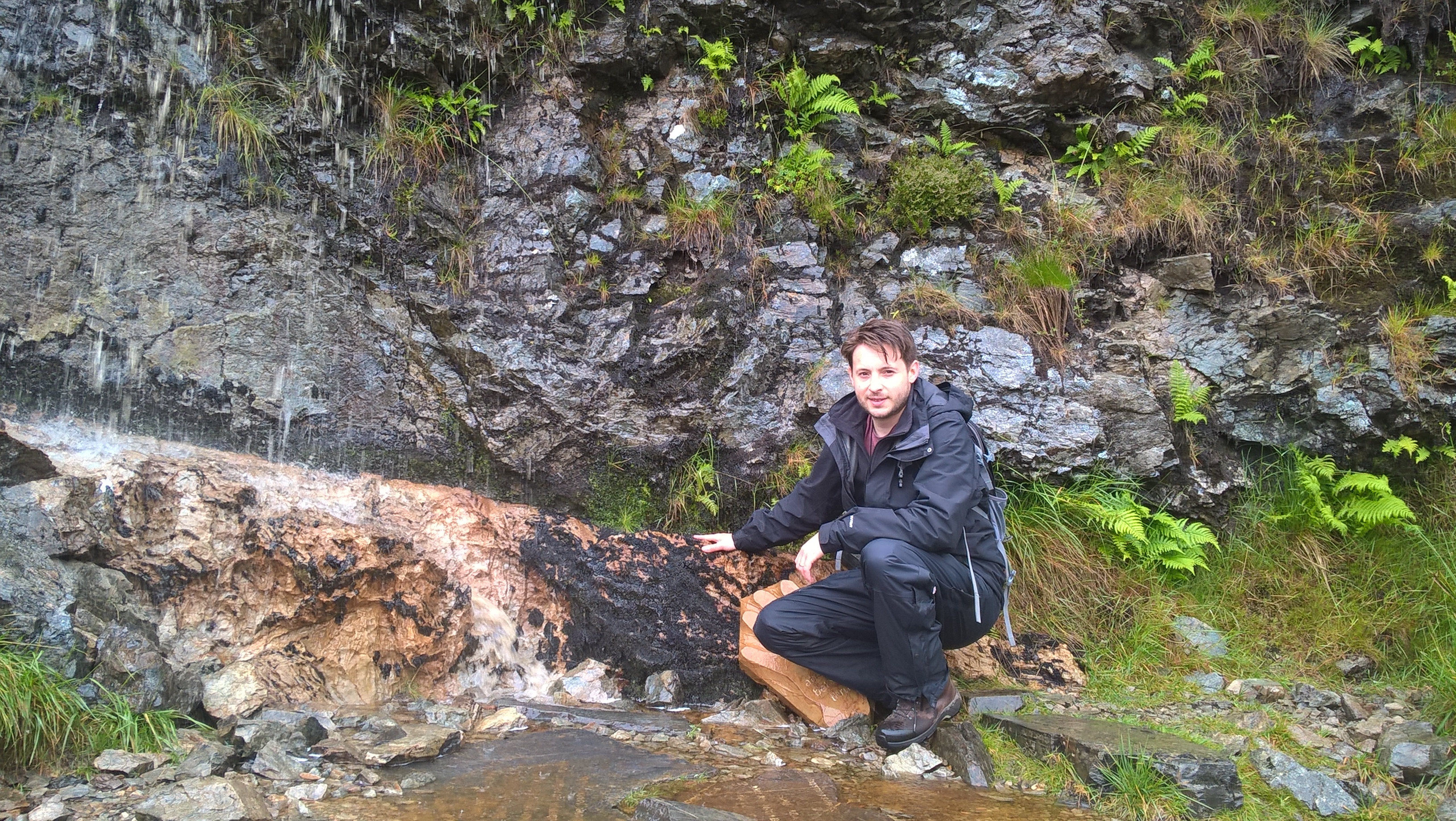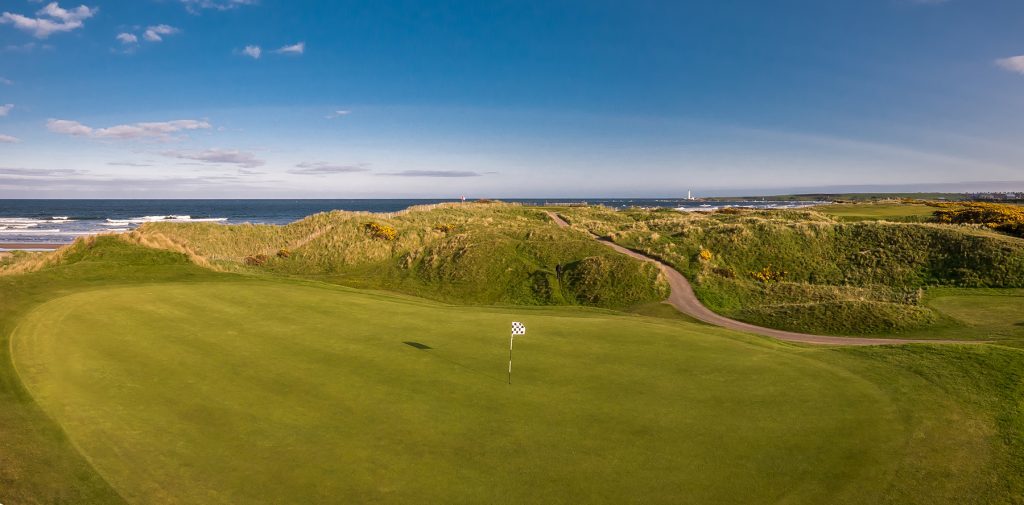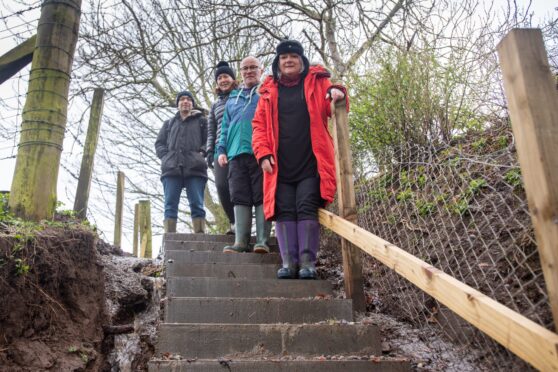A Tayside geoscientist has warned that a bid to save an Angus golf course from a watery grave could spark an ecological nightmare.
Montrose Links is looking at potentially installing £5 million-worth of rock armour to combat coastal erosion which is threatening to destroy part of the course which was created 455 years ago.
Failure to find a solution would mean a “massive realignment exercise” inland – amalgamating the existing championship and Broomfield courses into one.
However, Dr Fraser Milne said rock armour should be a “last resort” and should not be used “as it will simply move the erosion problem further along the coast”.
He said such hard engineering approaches would also cause the beach fronting the structure to gradually decrease in width due to ongoing beach erosion and sea level rise.
Dr Milne said: “It is imperative that any attempt to maintain the current layout of the golf course must not cause further damage to the coastal ecosystem.
“This explicitly rules out rock armour as it will generate extensive deleterious effects to the beach-dune system and simply move the erosion problem further along the coast to the first undefended section of shoreline.”
Dr Milne said any attempt to maintain the current layout of the golf course should instead focus on “soft engineering approaches to coastal management”.
The University of Dundee associate staff member said the most effective of these would be a beach recharge scheme in which sand dredged from the South Esk would be placed directly onto the beach to help build it up again.
“Erosion at the golf course is primarily caused by the dominance of northerly longshore drift at Montrose Bay whereby sand is transported by waves along the beach from the south end of the bay to St Cyrus,” he said.
“This leads to a sediment deficit at the golf course frontage and, consequently, coastal erosion.
“This trend has persisted since the late 1980s when an increase in the frequency of waves from the south-east resulted in a change from the previous pattern of sediment transport characterised by a stronger southerly longshore drift.
“Although predominantly a natural process, human activity has also contributed to the erosion at Montrose Bay.
“Specifically, the ongoing removal of sand from the coastal system during maintenance dredging of the South Esk navigation channel and the presence of pre-existing hard engineering defences have acted to exacerbate erosion at the site.
“Observed rises in sea level as a consequence of global warming are also likely to be having an increasing impact along the coast.”
A study published in 2016 by Mr Milne revealed approximately 70m of dune retreat has been lost at the southern end of the golf course frontage since the late 1980s.
Dr Milne said eventually the beach-dune system should reach a natural equilibrium “in which the rate of coastal retreat will significantly slow down”.
He said for this to occur the beach and dunes need to be given space to migrate inland, necessitating the realignment of the golf course.
He also insists future coastal management should be based on the principle of working with nature to prevent further man-made damage to the beach-dune system and to maximise its capacity to offer natural protection against erosion and coastal flooding.
Dr Milne said: “To achieve this, it is essential that sediment dredged from the South Esk navigation channel is kept within Montrose Bay rather than being removed offshore as has occurred in the past.”
A council spokesperson said: “A long term solution to the beach erosion is the intended outcome of the Montrose Beach Erosion Stakeholder Group which includes Montrose Port Authority and Angus Council.”











